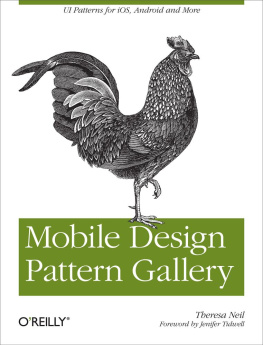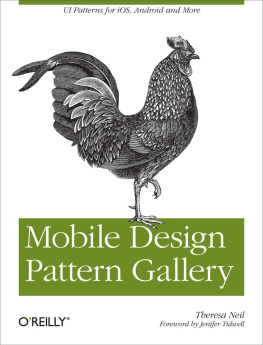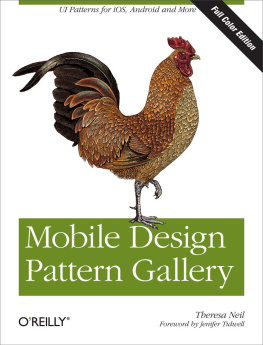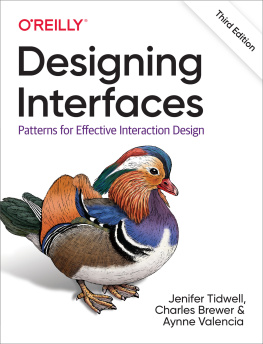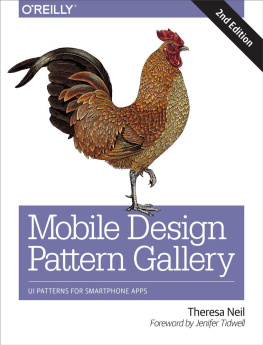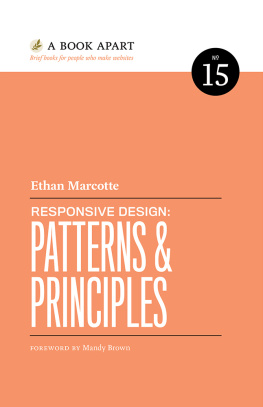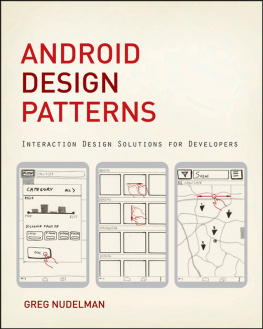Theresa Neil - Mobile Design Pattern Gallery: UI Patterns for Mobile Applications
Here you can read online Theresa Neil - Mobile Design Pattern Gallery: UI Patterns for Mobile Applications full text of the book (entire story) in english for free. Download pdf and epub, get meaning, cover and reviews about this ebook. year: 2012, publisher: OReilly Media, genre: Home and family. Description of the work, (preface) as well as reviews are available. Best literature library LitArk.com created for fans of good reading and offers a wide selection of genres:
Romance novel
Science fiction
Adventure
Detective
Science
History
Home and family
Prose
Art
Politics
Computer
Non-fiction
Religion
Business
Children
Humor
Choose a favorite category and find really read worthwhile books. Enjoy immersion in the world of imagination, feel the emotions of the characters or learn something new for yourself, make an fascinating discovery.
- Book:Mobile Design Pattern Gallery: UI Patterns for Mobile Applications
- Author:
- Publisher:OReilly Media
- Genre:
- Year:2012
- Rating:5 / 5
- Favourites:Add to favourites
- Your mark:
Mobile Design Pattern Gallery: UI Patterns for Mobile Applications: summary, description and annotation
We offer to read an annotation, description, summary or preface (depends on what the author of the book "Mobile Design Pattern Gallery: UI Patterns for Mobile Applications" wrote himself). If you haven't found the necessary information about the book — write in the comments, we will try to find it.
When youre under pressure to produce a well designed, easy-to-navigate mobile app, theres no time to reinvent the wheel. This concise book provides a handy reference to 70 mobile app design patterns, illustrated by more than 400 screenshots from current iOS, Android, BlackBerry, WebOS, Windows Mobile, and Symbian apps.
User experience professional Theresa Neil (Designing Web Interfaces) walks you through design patterns in 10 separate categories, including anti-patterns. Whether youre designing a simple iPhone application or one thats meant to work for every popular mobile OS on the market, these patterns provide solutions to common design challenges. This print edition is in full color.
Pattern categories include:
- Navigation: get patterns for primary and secondary navigation
- Forms: break the industry-wide habits of bad form design
- Tables and lists: display only the most important information
- Search, sort, and filter: make these functions easy to use
- Tools: create the illusion of direct interaction
- Charts: learn best practices for basic chart design
- Invitations: invite users to get started and discover features
- Help: integrate help pages into a smaller form factor
Its a super handy catalog that I can flip to for ideas.
Bill Scott, Senior Director of Web Development at PayPal Looks fantastic.
Erin Malone, Partner at Tangible UX Just a quick thanks to express my sheer gratitude for this pub, it has been a guide for me reworking a design for an app already in production!
Agatha June, UX designer
Theresa Neil: author's other books
Who wrote Mobile Design Pattern Gallery: UI Patterns for Mobile Applications? Find out the surname, the name of the author of the book and a list of all author's works by series.

